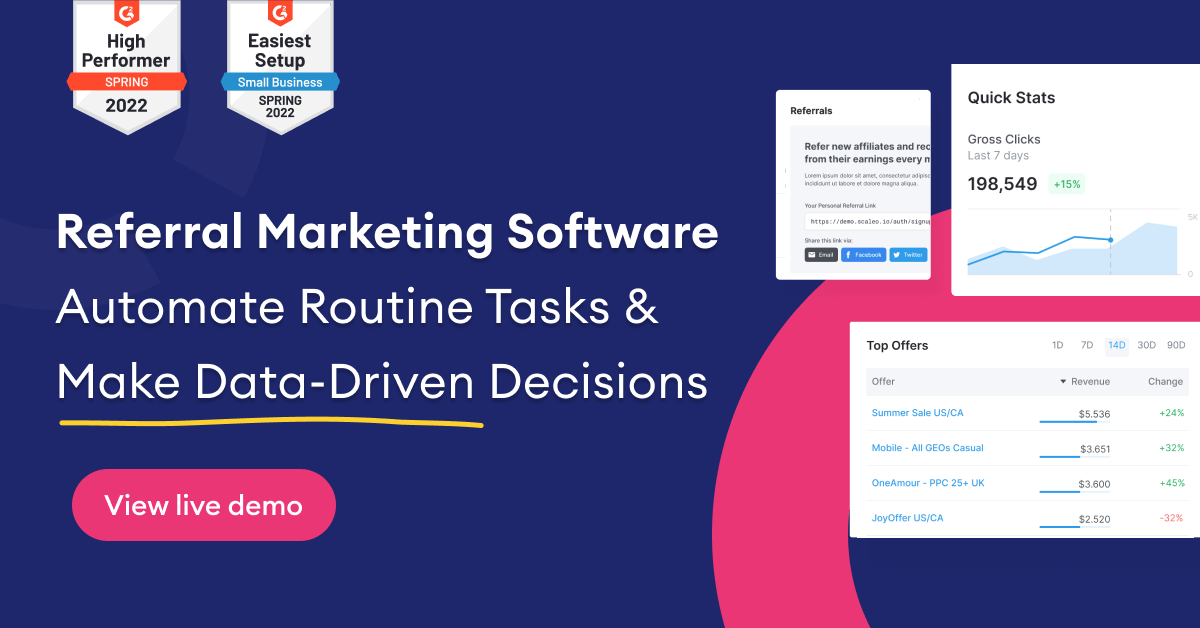You have all of the information you require. And the affiliate data to support that data. And for the data to back up all of your data. Still, all you have is raw material to make sound business decisions.
You must give it meaning by turning affiliate data into actionable insights, which isn’t easy because so much data is coming in all the time.
Continue reading to discover the core steps and principles of transforming data into insights.
What is the distinction between data and insights?
For analysts, data and insights may be interchangeable. But how do you turn data into information and, from there, actionable insights for the rest of us simple mortals who don’t see the world in numbers? Let us first define what actionable insights are.
Insights are interpretations of what these measures tell us, whereas affiliate data are discrete units of measurement. Actionable insights provide information to stakeholders to assist them in making business decisions.
Here’s an example from real life. If you have one, you measure your toddler’s growth on a regular basis—that’s your affiliate data. In the next step, you compare and figure out how much information you get from the data by figuring out the difference between the previous and current measurements.
With each inch of growth, your child outgrows his or her clothes and shoes, and you must begin purchasing larger sizes. As a result, if kids grow x inches in 6 months, you need to replace their clothes every half year—you now have actionable information.
On a larger scale, the same basic process occurs in business.
How do you turn affiliate data into insights?
Traditionally, each business unit has a clear set of responsibilities. The BI (Business Intelligence) and Analytics teams are in charge of gathering affiliate data and presenting it to marketers and other people who need to make decisions and plan.

Decision-makers frequently become lost in the facts and statistics because they can’t locate the link to their business realities. The data is there, but the insights are not, resulting in a pause in the decision-making process.
The disparity is widening as the amount and complexity of affiliate data increases.
This separation no longer exists in digitally sophisticated firms, as teams are composed of multiple department employees. What is the first rule to remember when transforming data into insights? Collaboration.
3 fundamental concepts for extracting insights from affiliate data:
- Collaboration. If they wish to derive actionable insights from their data, teams must pool their resources and embrace mutual accountability. Confrontation and demand offer less significant insights than communication and mutual support. Finally, all the teams are working toward the same goal, and understanding each other is an important part of that collaboration.
- Transparency. The analyst is familiar with the affiliate marketing data sources as well as the processes, marketing data kinds, and metrics. Management is aware of its objectives and the questions that must be addressed. Communication between both sides must be open and transparent so that each can understand what the other needs to do to finish their part of the assignment.
- Specificity. Business units must understand the primary revenue, expense, and risk drivers in their respective business areas. It is critical that all parties involved accurately state their requirements, intentions, and goals in order to identify representative data sets. Specificity is essential for affiliate marketing data analysts to determine the appropriate metrics to monitor.
How do you put these ideas into action?
Define a particular question.
Vagueness can lead to anarchy. Consider the following example: If someone asks you, “How do I go to the airport?” you’ll need additional information before you can provide a valid answer.
- Which airport is it?
- Where are they right now?
- Are they flying or picking up a passenger?
Make the relevance, context, and business impact clear.
Understanding the context of the analysis, constraints, motives, and desired outcomes allows you to identify which metrics to monitor and how to monitor them. What is the goal? Establish a link between the measurements and what the data reflects.
Set explicit expectations for the results of the data analysis.
Define the kind of insights that can be gained from the data you will offer. For example, do you need to provide a total number, an average number, or a change rate?
Create measurable KPIs.
Make sure the questions have quantitative metrics associated with them. To validate, you can utilize the SMART framework (Specific, Measurable, Attainable, Relevant, Time-based).
For optimal clarity, develop a hypothesis.
Defining a hypothesis can aid in achieving all of the aforementioned goals. A hypothesis might be something like this: if A is the outcome, it means XYZ for our business. If B is the result, that indicates XYZ for our business.
Collect the correct data in the proper manner.
Choose metrics that can display the needed information. You may need to connect different measures and figure out how to get the data that lead to the right answers.
Make use of segmentation.
Data segmentation allows you to be more detailed and acquire a more granular view. You can narrow your focus to a certain subset of data, such as a website section, industry, or audience, and then go deeper into the data’s behavior.
Connect to the data sources.
Integrate multiple data sources. Choose technologies that deliver the highest quality data to support the desired outcome. Consider combining primary and secondary research data.
The data should be correlated.
Investigate linked measures that have an impact on one another. For example, you should always keep an eye on your bounce rate to make sure that the traffic data is correct.
Learn about the context.
So far, we’ve stressed the significance of being specific. However, in order to understand what this data point means and come to a conclusion, it must be looked at in context.
How do you place data in the correct context?
Benchmark
Is 100 a large number or a small number? What about a ten-percent raise? Is that a good or a negative thing? It is conditional. Always talk about data in terms of something else, like the competition, the industry average, the goal, and so on.
Compare your company’s data against industry data. To uncover trends and anomalies, we examine data patterns, behavior, and growth rates.
Find out where you fit into the business world and how well you do in different types of business.
Pattern recognition
Metrics exhibit patterns. To assess the significance of a data figure, you must first recognize the pattern and contextualize it. Recognizing patterns allows for a better understanding of behavior. Every website, for example, experiences daily and seasonal swings of inactivity. Recognizing them helps you spot unusual data behavior and, as a result, make better decisions about it.
How do you make the affiliate data more relatable?
The analysis is carried out in order to obtain the information. Then, you must deliver it to stakeholders in an understandable manner. Here are some pointers on how to go about it:
Investigate visualization approaches.
Reports that solely include figures are a C-worst suite’s nightmare. Assist them in gaining clarity and avoiding misunderstandings, confrontations, and unneeded obstacles.
Visualize the data in a way that emphasizes important information. Graphs, matrices, pies, and even infographics can be used.
Explain the numbers verbally.
Do not simply send the report by email. Explain in English to the appropriate stakeholders what the numbers mean. Communication is crucial to digital transformation.
Produce context.
Instead of solely displaying your company’s data, give context to help understand the value of the affiliate data you’re presenting. Set the stage for your managers to grasp the meaning and put it into action.
Explain the competitive climate or provide some historical affiliate data as context for specific results.
Provide examples.
With competitive benchmarking, you can accurately portray what you’re up against. Most firms have a primary competitor against which they gauge their performance. Show examples of how that competitor is performing. Include examples of other representative businesses to help demonstrate your thesis.
Please provide references.
Make sure that you provide the sources of your data and explain why they are relevant. Business leaders want to know that you did a good job, and you may have to explain how you got the results you did.
Create a workflow for converting affiliate data into insights.
Create a repeatable method for getting insights from data based on these ideas and steps.
Converting data into insights is a process that should be approached as such.
Create a structured workflow for affiliate data analysis based on the steps you just took. By doing this, you can make data reporting a repeatable, insight-generating process that has a lot of value for your business.
Last Updated on November 1, 2021






